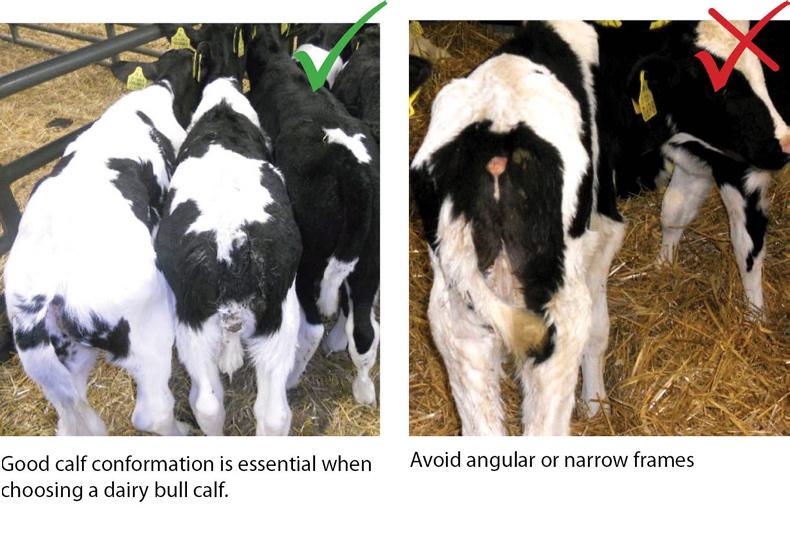For a dairy-calf-to-beef production system to be viable, you must start with a healthy calf. A strict purchasing policy should be established at the outset to ensure calves come on to the farm in a healthy condition.
Farms that do not implement a strict purchasing policy will have:
Some of the key components of a purchasing policy include:
It is important that you handle each calf before purchase and examine it thoroughly for signs of scour, pneumonia, swollen navel, hurts, or any other abnormalities.

Ensure that all calves purchased:

Even where a group of calves appear healthy it is advisable to check the temperature of a random sample as a sick calf can often show very few symptoms. The most efficient method is to use a rectal thermometer as this gives the most accurate reading. A temperature of above 39.5°C indicates a fever and the calf should not be purchased.

Choosing the right calf
When sourcing calves, farmers should be aware of the market requirements they have to meet, and the suitability of the calf to their system.
The main markets for dairy bred animals require a carcase over 270kg and grading O= or better. To achieve this you will require a calf that:
Calf transport
When transporting calves, stress levels and exposure to disease need to be kept to a minimum. You should:

This article was first published in the Dairy Calf to Beef booklet published by the Irish Farmers Journal with ABP Ireland, Kepak Group, OSI Food Solutions, and McKey Food Services in France.
